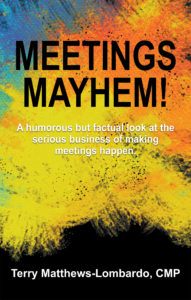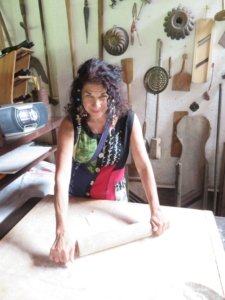MPI ISBO: Technology and Your Small Business
/0 Comments/in • MISC, Meetings & Events industry news, MPI - SBO /by Karen KuzselEVENT INSIDER: MEETINGS MAYHEM – a startling reality check behind live events
/0 Comments/in • MISC, Book Reviews, Event Insider, Meetings & Events industry news /by Karen Kuzsel
Meetings Mayhem
Meetings Mayhem is what happens when you tumble dry the principles of Murphy’s Law with surprising mishaps experienced by hospitality, meetings and events, and entertainment industry experts, and then have a professional meeting planner collect and fold them into a passion project ready-made as a “how to respond to nightmare scenarios and come out a winner” book. I vacillated between laughing out loud and gratefully moaning, “Thank goodness it wasn’t me in that situation!”
You don’t have to be in the aforementioned industries to appreciate that “no matter how well you plan, there is always something beyond your control that can drastically upend at the last minute.” What author and professional meeting planner Terry Matthews-Lombardo, CMP demonstrates is that no matter how dire the situation might seem, the anecdotes contained within the pages of this easy-to-read 182 pages are an amusing guide for what-to-do-if…
MPI ISBO: Business Insurance (What To Have And Why)
/0 Comments/in • MISC, Meetings & Events industry news, MPI - SBO /by Karen KuzselMPI ISBO: Managing Your Finances for Your Small Business
/0 Comments/in • MISC, Meetings & Events industry news, MPI - SBO /by Karen KuzselEAT. COOK. TRAVEL.
/0 Comments/in • MISC, Tasty!, Travel /by Karen Kuzsel
Rolling out strudel dough at Dunaalmási Lovarda, a Hungarian family farm and cooking school.
“Just take one bite. If you don’t like it, you don’t have to eat a second.” I can still hear my mom’s cajoling words when I turned up my nose or clenched my mouth tight. Light years later, those very words slipped out of my mouth when my picky-eater daughter would refuse to eat what I had cooked. Fortunately for both of us, now world class champions of trying a bite of something unfamiliar (no insects, please… I can only bend so far!), the “try one bite rule” has enabled us to travel across many countries and continents, devouring many new foods along the way.
